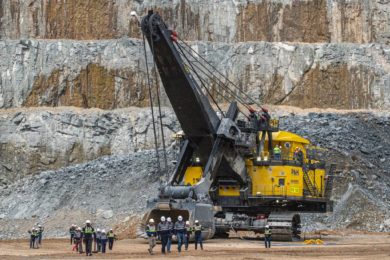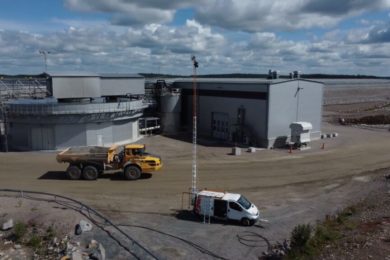Mira Geoscience continues to expand its integrated interpretation and data management software and consulting services to address the challenge of exploration targeting for deep or under cover deposits. Its innovations focus on developing and applying quantitative analysis to the integrated geology-geophysics-geochemistry interpretation challenge across a range of scales, commodities, and methods. The software development focus is on Geoscience INTEGRATOR for data management, GOCAD® Mining Suite for advanced integrated modelling, and Geoscience ANALYST for decision making and communication. Mira Geoscience also contributes to the development and commercialisation of UBC-GIF and Fullagar Geophysics VP Suite. Additional research in predictive modelling and data integration is ongoing.
Integrated modelling and analysis of exploration data requires sound data management infrastructure and practices. Mira Geoscience is using its experience in developing integrated geotechnical data management systems for underground mines (for example Rio Tinto’s “CaveCad” system) for managing integrated exploration data. It is extending the proprietary Geoscience INTEGRATOR data management system so that drillhole data can be managed seamlessly alongside all types of geological, geophysical, and geochemical exploration project data. The data management system features seamless connection to 3D visualisation, modelling, and targeting systems. It ensures data security, QA/QC, and rapid contextual and visual query.
Last July Paradigm® renewed its long-term agreement with Mira Geoscience for the delivery of Paradigm SKUA-GOCAD™ modelling software to the global mining industry. GOCAD Mining Suite enables the interpretation and integration of multi-disciplinary data from many disparate sources into a single, quantitatively consistent 3D model. Advanced, easy-to-use and modular, the software ensures that 3D geological models respect a consistent structural, stratigraphic and topological framework to support the discovery and recovery of mineral resources. Mira Geoscience is now working on the upcoming release of version 14.
Recent, successful advances in stochastic, non-Euclidean approaches to the problem of understanding complex data relationships have been made in disciplines such as genomics and epidemiology. Predictive models are constructed from the integration of complex data sets without the limiting assumptions of traditional statistical approaches. These new approaches can easily handle continuous, discrete, noisy, and missing data without the imposition of statistical models or assumptions. In partnership with HyperCube Research, Mira Geoscience is applying such an approach to exploration targeting. The method provides a series of robust rules describing the relationship between input exploration data variables and mineral occurrences. The rules discovered are typically of much greater utility than statistical trend observations. These methods have the potential to improve discovery rates when applied as part of a carefully planned and systematic process of modelling, interpretation, and target generation.
AMIRA Project P1022, Rapid Approximate Inversion of TEM Data, completed its work in 2014 with a breakthrough in 3D TEM inversion. The research was conducted by Fullagar Geophysics and CODES (University of Tasmania), sponsored by AngloGold Ashanti, Gold Fields, Rio Tinto, and Mira Geoscience. The new inversion algorithm, VPem3D, offers both speed and practicality. It is suitable for airborne, downhole, and ground dB/dt or B-field data. As with other modelling and inversion codes in the Fullagar Geophysics VP Suite, VPem3D can operate directly on 3D geological models. It fills an important gap in interpretability of TEM data, providing a fast, approximate solution when rigorous 3D inversion is too slow and expensive, but neither CDIs nor 1D inversion is adequate.
More rigorous 3D TEM software can be employed to refine the interpretation of selected anomalies later, if required. VPem3D will be released commercially by Mira Geoscience in February 2015.
UBC-GIF recently released a substantial upgrade of its GRAV3D, MAG3D, DCIP3D and DCIP2D forward modelling and inversion programs. Enhancements allow users to save time and run efficiently on large-scale problems with multi-processor capability. The new versions provide increased capability to incorporate geologic information via a multicomponent regularisation function, the reference model, petrophysical constraints, and use of active and inactive cells.
The company continued playing a key role in the largest-ever Canadian mineral exploration research project, the industry- and NSERC-funded CMIC Footprints project, by providing its software suite as the project’s key 3D integrated earth modelling platform, and providing direct research leadership in the data integration component of the program.









